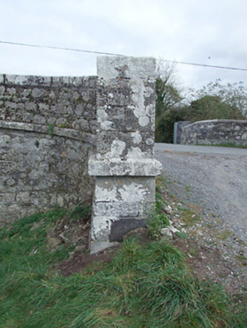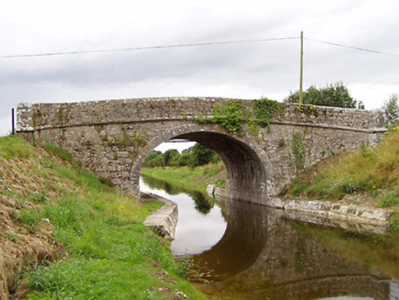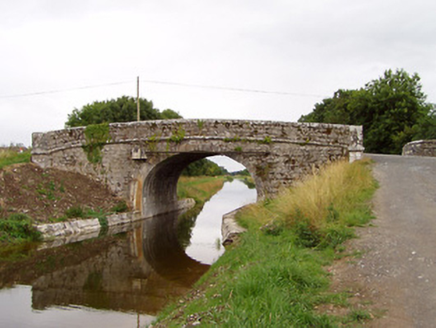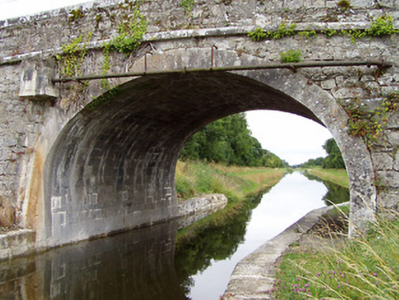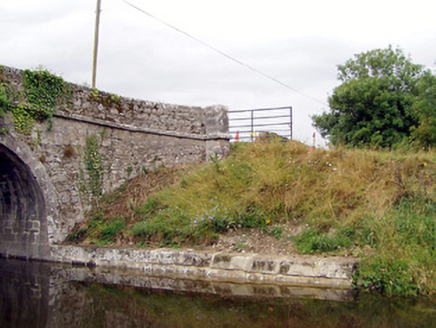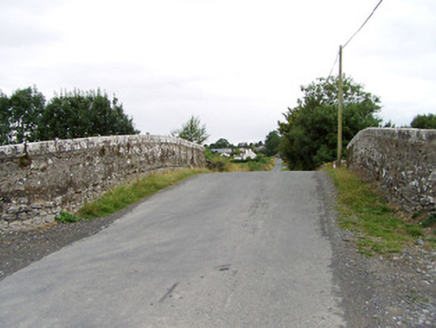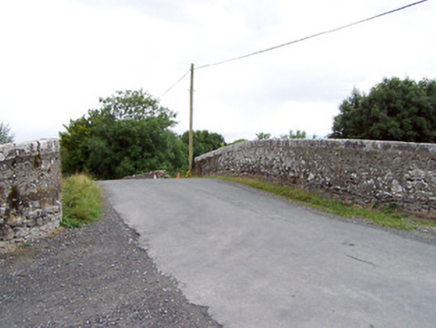Survey Data
Reg No
13402602
Rating
Regional
Categories of Special Interest
Architectural, Technical
Previous Name
Arched Bridge
Original Use
Bridge
In Use As
Bridge
Date
1810 - 1820
Coordinates
213663, 257990
Date Recorded
11/08/2005
Date Updated
--/--/--
Description
Single-arch humpbacked canal bridge carrying road over Royal Canal, built c. 1815. Round/elliptical-headed arch with dressed ashlar limestone voussoirs and dressed ashlar limestone masonry to barrel. Rubble stone construction, formerly rendered, with cut limestone string course at road/deck level. Rubble stone construction to parapets, formerly rendered, with curving ends terminated in dressed ashlar limestone piers (on square-plan). Dressed limestone coping over parapet walls. Towpath to south bank of canal with dressed limestone retaining walls to canal banks (north and south). Located to the west of Ballymahon. Former canal stores (13402601) and quay adjacent to the west.
Appraisal
A typically well-built canal bridge, which is a valuable part of the extensive canal-related built and industrial heritage of County Longford. Although humble in form, this structure has a simple and functional elegance. It is robustly built in good-quality stone masonry, which is testament to the long-term ambitions of the Directors General of Inland Navigation (who took over responsibility for the Royal Canal following the dissolution of the Royal Canal Company in 1813) at the start of the nineteenth century. It was probably built to designs by John Killaly (1766 – 1832), the engineer responsible for the construction of the Royal Canal between Coolnahay to Cloondara, which started in 1814 and was completed in 1817 (28 years after the canal work was started in Dublin). The main contractors involved were Henry, Mullins and McMahon. This bridge is an interesting feature in the rural landscape to the west of Ballymahon and is an integral element of the built heritage of the local area. The dressings and limestone flagging to the embankment are finely carved and are clearly the work of skilled craftsmen. The bridge serves as a reminder of the quality of the engineering and local craftsmen's skills in the early to mid nineteenth century. The bridge forms an integral part of other related canal structures including the warehouses.
